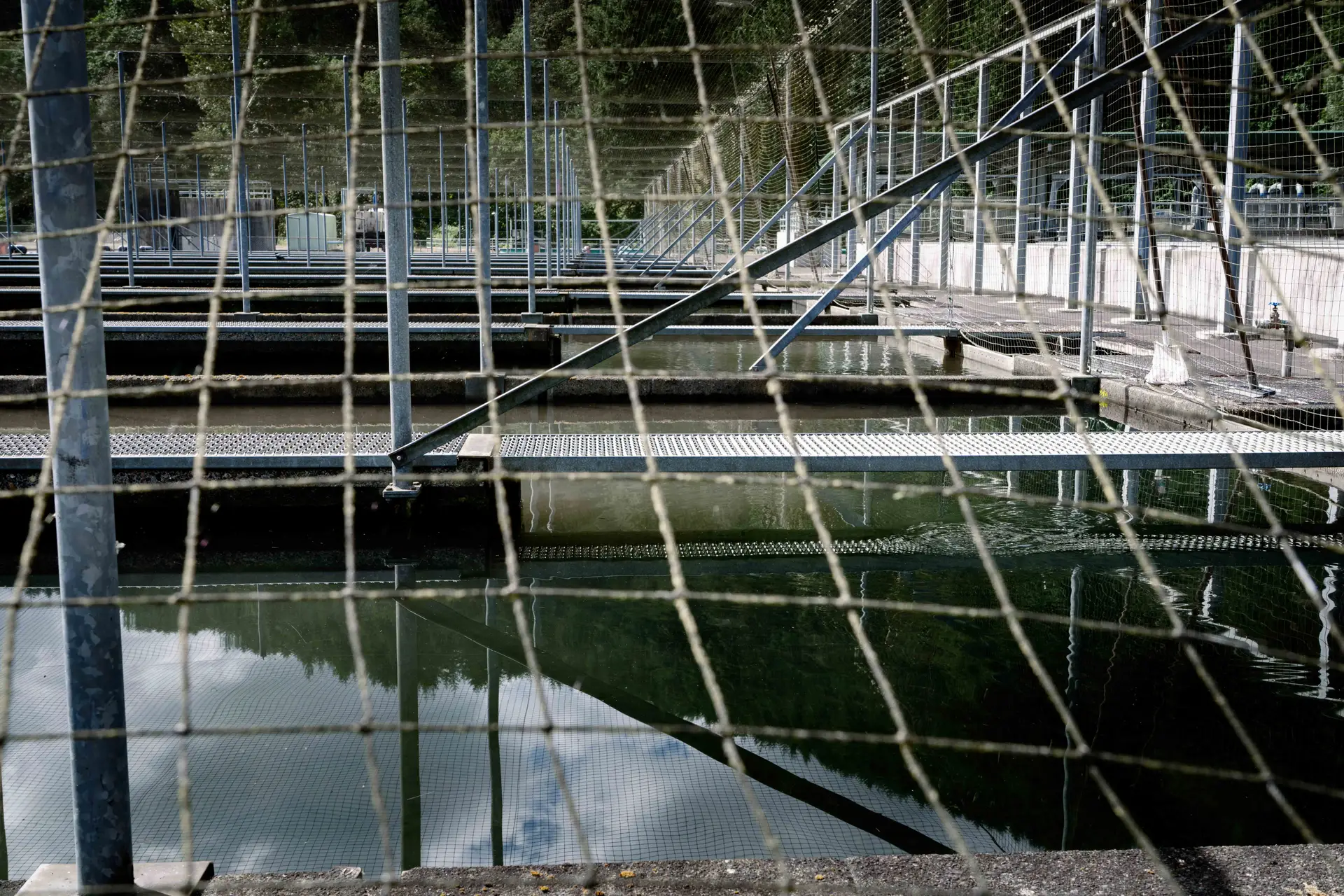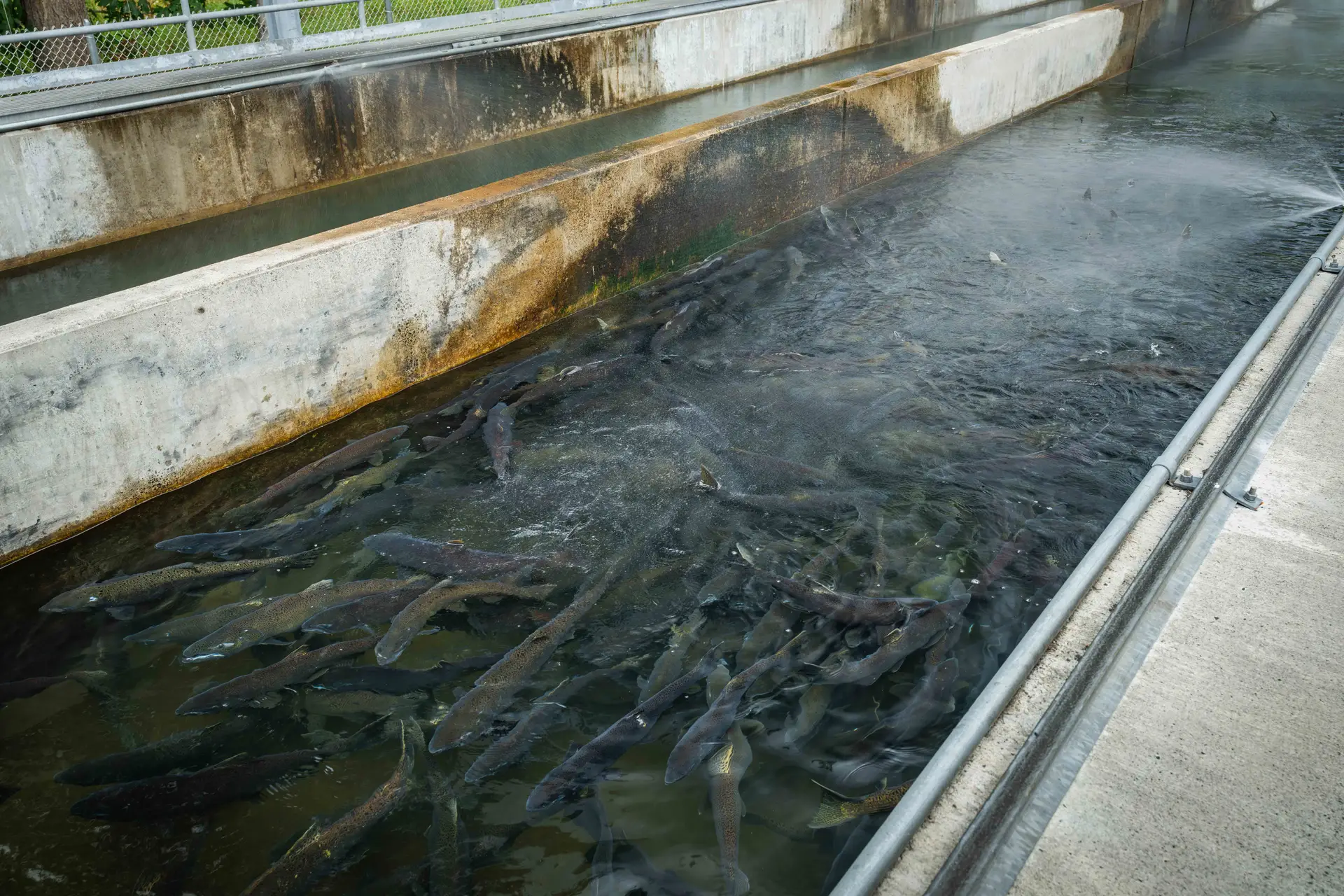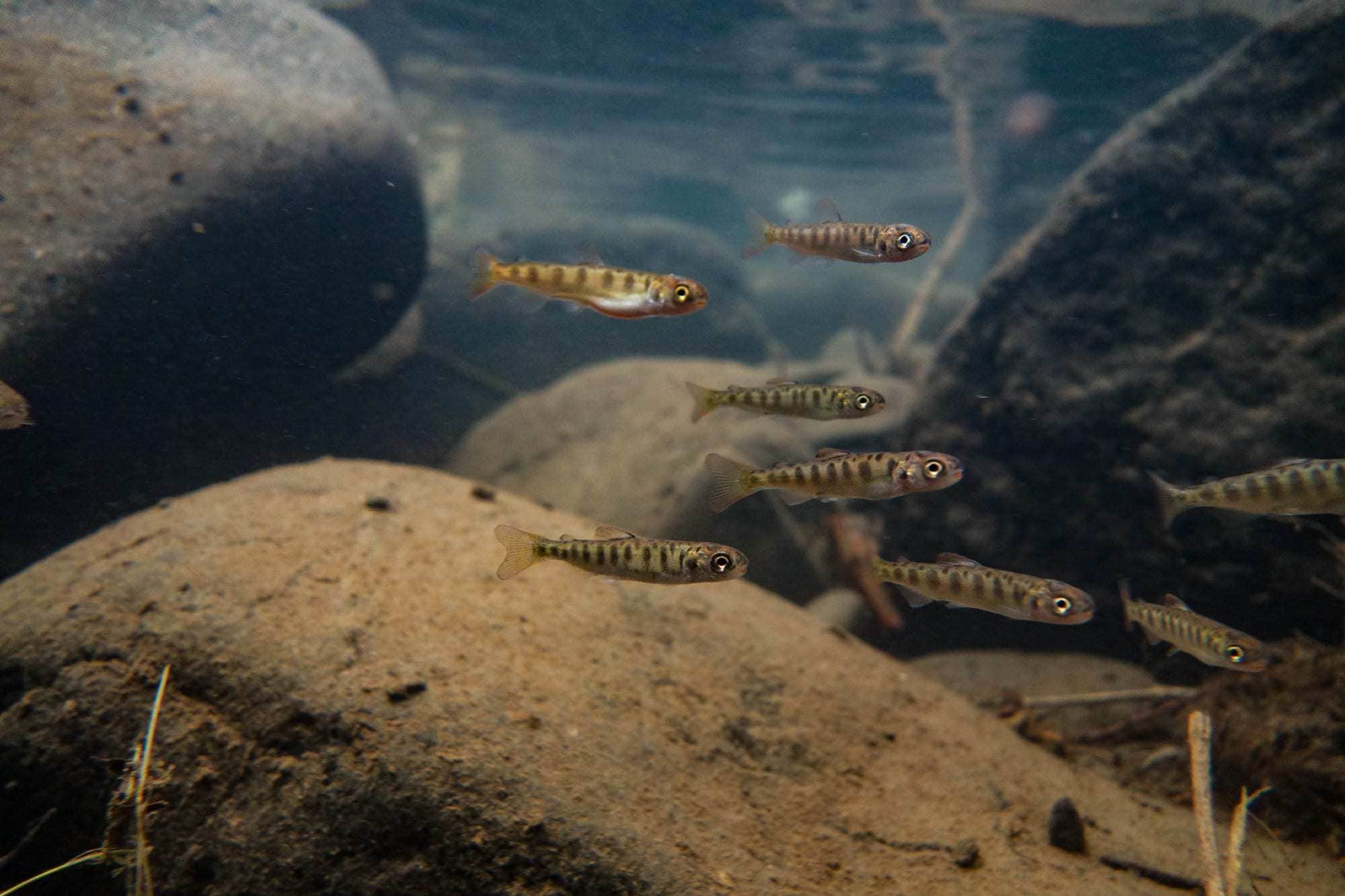
Last week, Wild Fish Conservancy (WFC), our friends at The Conservation Angler (TCA), and Washington’s Department of Fish and Wildlife (WDFW) filed a joint consent decree in federal court to settle claims in an Endangered Species Act (ESA) lawsuit challenging the operation and funding of hatcheries in the lower Columbia River operating under the Mitchell Act and Select Area Fishery Enhancement (SAFE) programs.
After decades of exposure to harmful hatchery impacts, the agreement is a positive step forward that will provide much needed relief to some of the Columbia River’s most at-risk wild salmon and steelhead populations. The agreement requires WDFW to implement essential measures that will result in more responsible, legally compliant, and transparent management practices at their hatcheries in the lower Columbia River.
Specifically, the consent decree requires the termination of the Deep River net pens coho program and the non-native Washougal steelhead program, as well as a reduction in the release of Chinook from the Kalama/Fallert program. We are also encouraged that this agreement paves the way for collaboration between Washington and Oregon to advance alternative commercial fishing methods with the goal of reducing hatchery straying and supporting the recovery of wild salmon and steelhead populations, while enabling responsible fisheries.
The agreement will also improve the public’s access to information about Washington’s hatchery programs on the lower Columbia River that has historically been opaque and difficult to obtain. Most notably, the Department will develop and maintain a ‘Compliance Review and Data Disclosure Program’ for all hatcheries operating under the Mitchell Act and SAFE program in the lower Columbia River that will be publicly available through the Department’s website.
The lawsuit, filed by Wild Fish Conservancy and The Conservation Angler in April, challenges WDFW, Oregon’s Department of Fish and Wildlife (ODFW), Clatsop County, and NOAA Fisheries for perpetuating the decline of threatened salmon and steelhead by failing to comply with vital safeguards and enforce key requirements under the ESA while managing lower Columbia River hatcheries. These actions also hinder the survival and recovery of endangered Southern Resident killer whales as a result of hatchery effects that decrease the abundance, size, and diversity of wild Chinook, the whale’s primary prey.

Congress enacted the Mitchell Act in 1938, to attempt to mitigate adverse effects to salmon in the Columbia River Basin resulting from the construction of dams, water diversions, logging, and pollution. NMFS distributes funds appropriated under the Mitchell Act that Congress has allocated to hatchery programs. In recent years, Mitchell Act funding has ranged between $15,000,000 and $22,000,000 annually, supporting roughly one-third of all hatchery production in the Columbia River.
A 2023 study evaluated the impact of the federal government’s total $9 billion dollar investment in hatchery production and restoration spending in the Columbia River over the past forty years. Despite the scale of the investment, the results showed no evidence of increased abundance of wild salmon or steelhead in the Columbia River Basin.
The SAFE program was developed by the Northwest Power Planning Council (currently Northwest Power and Conservation Council) in 1993 to enhance fisheries. The program was intended to concentrate hatchery fish releases and fisheries in “off channel” locations away from wild salmon migration and spawning areas in the Columbia River.
One of the most prolific and concerning ESA violations identified in the complaint is the widespread straying of hatchery fish in the lower Columbia River. This occurs when hatchery-produced fish, which are intended for recreational and commercial fisheries, are not caught but return to streams and rivers where they interbreed with wild fish. When this occurs at rates that exceed those legally permitted, hatchery strays undermine the wild fish genetics that allow wild fish to thrive in the natural environment. Straying hatchery fish that breed with wild fish present significant challenges for the recovery of wild fish populations threatened with extinction.
Much like the boundaries established for climate change, stray rate thresholds to protect ESA-listed wild fish should not be viewed as ‘goals’ or ‘targets’; rather they represent the maximum level of harm that can occur before such harm becomes irreversible. In this case, NOAA Fisheries has the responsibility of developing scientific thresholds required to avert detrimental genetic, ecological, and facility impacts from hatcheries that could potentially lead to the extinction of at-risk wild salmon and steelhead populations.
Despite this threat being well-understood, NOAA Fisheries and state hatchery operators have failed over decades to bring Mitchell Act and SAFE program hatcheries into compliance with required thresholds under the ESA to limit hatchery and wild interactions. More concerning, according to recent research published by WDFW scientists, the primary tool these agencies have relied on over the last decade– weirs– have proven ineffective at addressing hatchery straying and found to cause additional harm to wild fish recovery by impeding upstream passage of wild salmon and steelhead to their natural spawning grounds. The photos below show examples of WDFW operated weirs in tributaries of lower Columbia River.
Best available science and recommendations from independent scientists consistently point to two proven and effective ways to address this problem: (1) limiting hatchery production by releasing fewer fish relative to what fisheries can harvest or (2) using selective fishing methods, like pound nets or seines, to selectively harvest hatchery fish and release wild fish unharmed. Both Washington and Oregon have conservation policies in place directing the development and implementation of commercial selective fishing methods in the lower Columbia River, however conflicting policies on either side of the border remain a primary hurdle to achieving this shared goal.
The settlement agreement with WDFW is helping to address both hatchery straying and selective fishing policy problems by reducing and eliminating production at hatcheries known to contribute to widespread straying and by creating a path forward for Washington and Oregon to develop solutions to existing policy barriers that prevent successful implementation of selective fisheries in the lower Columbia River.
While the settlement agreement is a favorable and positive outcome for at-risk wild salmon and steelhead populations in the Columbia River, we are discouraged by fishery management agencies’ recurring failure to comply with the ESA when managing Columbia River hatcheries. WFC previously litigated over these same Columbia River hatchery programs in 2016 in a similar lawsuit calling on NOAA Fisheries to comply with the ESA when funding and authorizing Mitchell Act hatcheries. Nearly a decade later, the responsibility for enforcing the ESA continues to require public intervention, and non-compliant hatchery programs have been allowed to impede recovery and perpetuate harm to wild salmon, steelhead, and Southern Resident killer whales threatened with extinction.
Looking forward Wild Fish Conservancy and The Conservation Angler continue to litigate this case against NOAA Fisheries, ODFW, and Clatsop County. If you have any questions about this important legal effort, reach out to us at info@wildfishconservancy.org.

Wild fish and orca whales don’t have a voice of their own in Court houses, Commission meetings, or talking to the press.
This is why it’s so critical that these iconic species have watchdogs and advocates willing to speak on their behalf and demand they receive the protections afforded by law necessary to prevent their extinction.
Wild Fish Conservancy is dedicated and committed to take whatever actions necessary to ensure the agencies entrusted with preserving and restoring our region’s wild fish heritage are meeting their responsibilities under the Endangered Species Act and to the public trust.
Please consider making a donation today to support our work advancing environmental law and policy.
